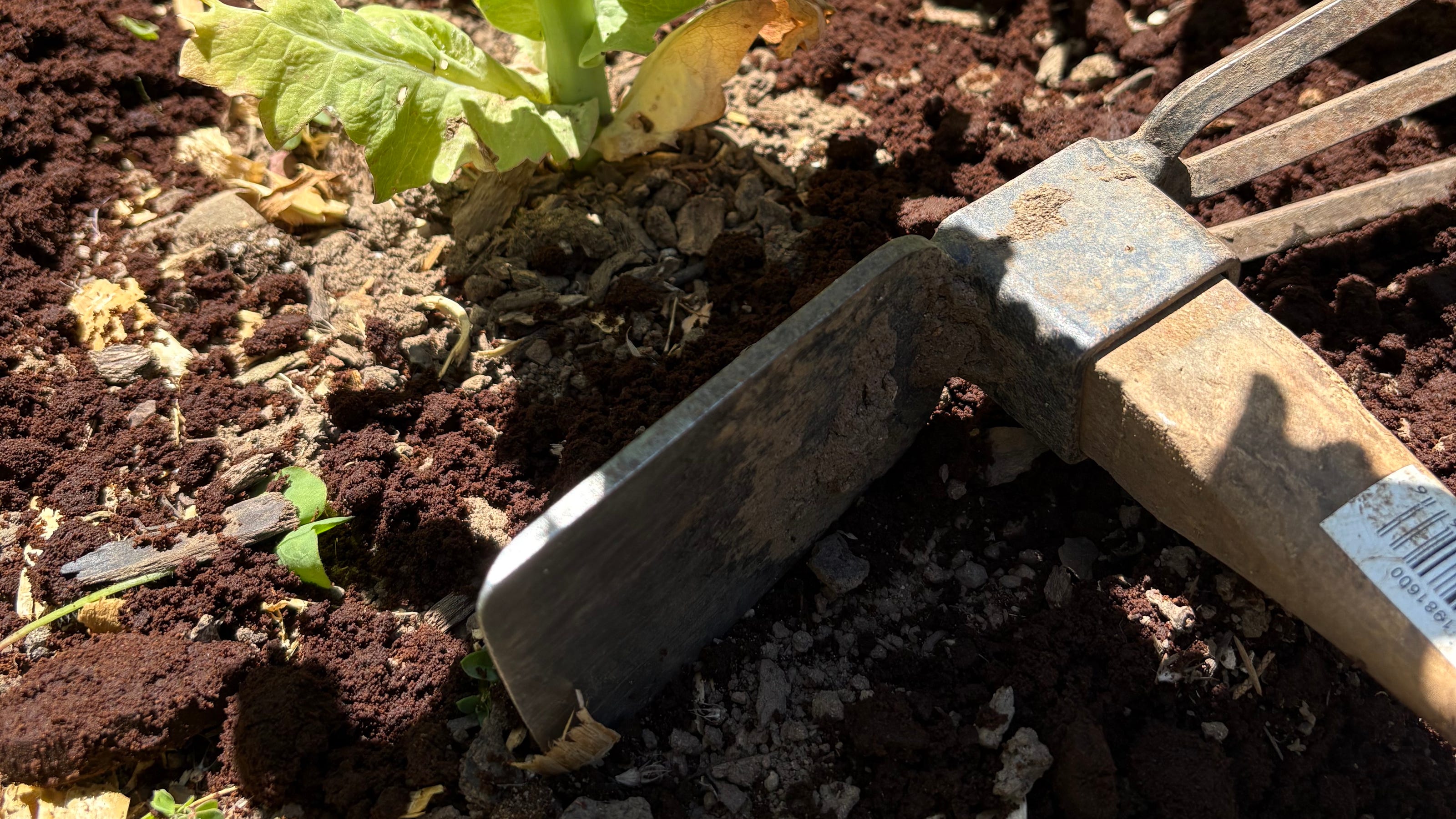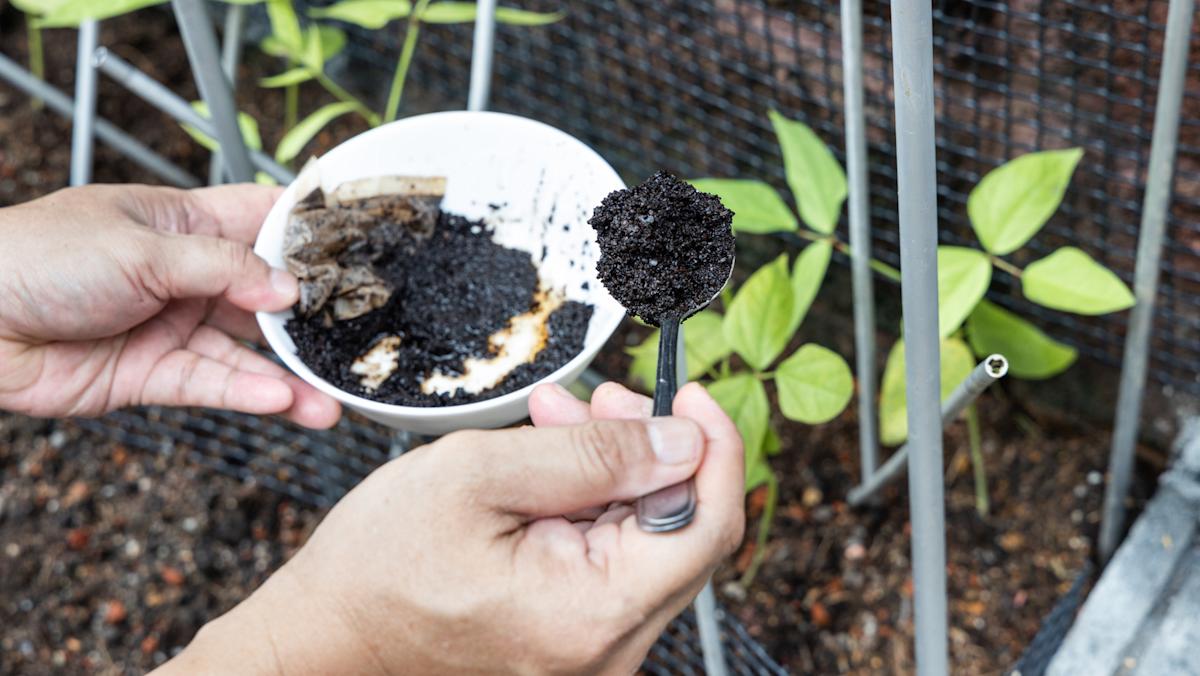Coffee Grounds For Plants: Benefits And Cautions

Welcome to your ultimate source for breaking news, trending updates, and in-depth stories from around the world. Whether it's politics, technology, entertainment, sports, or lifestyle, we bring you real-time updates that keep you informed and ahead of the curve.
Our team works tirelessly to ensure you never miss a moment. From the latest developments in global events to the most talked-about topics on social media, our news platform is designed to deliver accurate and timely information, all in one place.
Stay in the know and join thousands of readers who trust us for reliable, up-to-date content. Explore our expertly curated articles and dive deeper into the stories that matter to you. Visit Best Website now and be part of the conversation. Don't miss out on the headlines that shape our world!
Table of Contents
Coffee Grounds for Plants: Benefits and Cautions – A Gardener's Guide
Are you a coffee lover with a green thumb? Then you're in luck! Used coffee grounds, often tossed in the trash, can be a surprisingly valuable asset to your garden. But before you start dumping your morning brew's leftovers directly onto your prize-winning roses, let's explore the benefits and cautions of using coffee grounds as a soil amendment.
The Perks of Using Coffee Grounds in Your Garden:
Coffee grounds offer a range of benefits for your plants, making them a popular choice among environmentally conscious gardeners. These benefits include:
-
Nutrient Boost: Coffee grounds are rich in nitrogen, potassium, and phosphorus – essential nutrients for healthy plant growth. Nitrogen, in particular, promotes lush foliage. While not a complete fertilizer, they provide a welcome supplement to your existing fertilization regimen.
-
Improved Soil Structure: Adding coffee grounds to your soil improves its structure, increasing aeration and drainage. This is particularly beneficial for heavy clay soils, making them more workable and allowing for better root development. The organic matter in the grounds also contributes to improved soil health over time.
-
Acidification of Soil: Coffee grounds are slightly acidic (pH around 6.5), making them ideal for acid-loving plants like blueberries, azaleas, rhododendrons, and camellias. These plants often struggle in alkaline soils, so the addition of coffee grounds can significantly improve their health and yield.
-
Pest Deterrent: Some gardeners report that coffee grounds can act as a natural deterrent against certain pests, such as slugs and snails. The grounds' rough texture and caffeine content may make the soil less appealing to these unwanted visitors.
Cautions and Considerations When Using Coffee Grounds:
While coffee grounds offer numerous benefits, it's crucial to use them responsibly to avoid potential problems:
-
Overuse: Too many coffee grounds can actually harm your plants. Overuse can lead to nutrient imbalances, impacting the soil pH significantly, and potentially creating anaerobic conditions that hinder root growth. Start with small amounts and observe your plants' response.
-
Mold and Fungus: Improperly composted coffee grounds can attract mold and fungus, potentially harming your plants. Ensure proper composting techniques are used or incorporate the grounds into the soil gradually.
-
Caffeine Toxicity: While unlikely to harm most plants, extremely high concentrations of caffeine can be toxic to some sensitive seedlings. Use moderation, especially when dealing with young plants.
-
Nutrient Imbalances: Coffee grounds alone don't provide a complete set of nutrients. Always supplement with a balanced fertilizer to ensure your plants receive all the necessary nutrients for optimal growth.
How to Use Coffee Grounds Effectively:
-
Composting: The best approach is often to incorporate coffee grounds into your compost pile. This allows for proper decomposition and reduces the risk of mold and nutrient imbalances.
-
Direct Application: You can directly add small amounts of coffee grounds to the soil around your plants, mixing them gently into the top layer. Avoid piling them directly on the plant's base.
-
Mulching: Coffee grounds can be used as a component of mulch, providing a slow-release source of nutrients and helping to retain soil moisture.
Conclusion:
Used coffee grounds are a fantastic example of upcycling – transforming waste into a valuable resource for your garden. By understanding both their benefits and potential drawbacks and using them judiciously, you can significantly improve your soil health and nurture thriving plants. Remember to always monitor your plants' health and adjust your coffee ground application accordingly. Happy gardening!

Thank you for visiting our website, your trusted source for the latest updates and in-depth coverage on Coffee Grounds For Plants: Benefits And Cautions. We're committed to keeping you informed with timely and accurate information to meet your curiosity and needs.
If you have any questions, suggestions, or feedback, we'd love to hear from you. Your insights are valuable to us and help us improve to serve you better. Feel free to reach out through our contact page.
Don't forget to bookmark our website and check back regularly for the latest headlines and trending topics. See you next time, and thank you for being part of our growing community!
Featured Posts
-
 Evaluating The Viability Of Trumps Golden Dome Missile Defense Plan
May 26, 2025
Evaluating The Viability Of Trumps Golden Dome Missile Defense Plan
May 26, 2025 -
 Transatlantic Travel Shift Airlines Redirect Flights From Us To Caribbean Mexico And South America
May 26, 2025
Transatlantic Travel Shift Airlines Redirect Flights From Us To Caribbean Mexico And South America
May 26, 2025 -
 Late Game Surge Phillies Winning Streak Continues In Wild Extra Inning Affair
May 26, 2025
Late Game Surge Phillies Winning Streak Continues In Wild Extra Inning Affair
May 26, 2025 -
 Photos Macron Vietnam Demantelement Des Fausses Informations Sur Une Agression
May 26, 2025
Photos Macron Vietnam Demantelement Des Fausses Informations Sur Une Agression
May 26, 2025 -
 3 Clever Ways To Use Coffee Grounds For A Thriving Garden
May 26, 2025
3 Clever Ways To Use Coffee Grounds For A Thriving Garden
May 26, 2025
Latest Posts
-
 Beyond Gates And Buffett Analyzing The 600 Billion Commitment To Charity
May 28, 2025
Beyond Gates And Buffett Analyzing The 600 Billion Commitment To Charity
May 28, 2025 -
 Did You Receive A Fraudulent Text From The Ga Dds Heres What To Do
May 28, 2025
Did You Receive A Fraudulent Text From The Ga Dds Heres What To Do
May 28, 2025 -
 Liverpools Championship Parade Understanding The Recent Incident
May 28, 2025
Liverpools Championship Parade Understanding The Recent Incident
May 28, 2025 -
 Harvards Elitism A Convenient Target For Trumps Rhetoric
May 28, 2025
Harvards Elitism A Convenient Target For Trumps Rhetoric
May 28, 2025 -
 Frequently Asked Questions About The 2025 Atlantic Hurricane Season
May 28, 2025
Frequently Asked Questions About The 2025 Atlantic Hurricane Season
May 28, 2025
